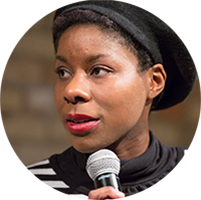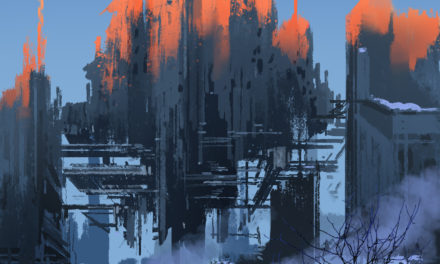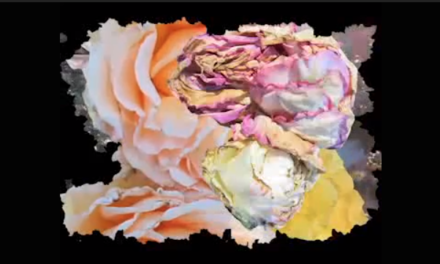The Avatar and Great Men
by Maya Beck
Issue 11: Governance | 3,027 words

untitled, © vladwel/Adobe Stock
When Avatar: The Last Airbender first aired, I was 17. By that time, I’d seen nine years of Toonami and even more years of fan-subbed anime, watching everything from Gundam space pilot teen melodramas to Bee Train studio‘s Celtic-sound-tracked ambiguously Sapphic works, and Western/Japanese collaborations like The Animatrix.
Given that wide palette, my teen self thought that Avatar was mediocre compared to the robust catalog of animation that inspired it. I was attracted to it, though, because of scarcity: the USA didn’t have many cartoons with overarching plots, nor many fantastic franchises with non-White characters. With those together, it became a cherished adolescent memento.
Avatar’s storytelling and worldbuilding strengths made the show feel inventive, at first. Then I became irritated by it: why were people who refused to watch cartoons from Japan lauding this American imitation? Get off your American exceptionalist high horse already! But fifteen years later, inspired by friends and coworkers and some good memories, I logged on the family Netflix account to give the show another chance. I got as far as Episode 4 of Season One, “The Warriors of Kyoshi,” when my irritation returned, multiplied.
I had so many questions, the first set focused just on names:
Why are they pronouncing it key-yo-shee, if it’s spelled kyo-shi? Do they not know how to pronounce the languages they’re imitating?
Why is her name Suki? That literally means like. They’ve basically named her Love Interest!
Then I found an issue with the worldbuilding. Characters in the show practice a Chinese-based martial art that manipulates four elements—earth, water, fire, and air.
Why are they using the four Greek classical elements? It’s five in Chinese culture, right? Is it five in Buddhism?
These were only the issues I caught, as a Black girl who’d taken a year of Japanese language and a year of Chinese Philosophy in college and researched names as a hobby. Just how much did they get wrong?
On this Avatar watch, I was reminded of a former comparative religion and world philosophy teacher. The teacher taught us the term “avatar” meant—before the Internet watered it down—the human manifestation of a god, primarily in Hinduism. I remember him laughing, calling the show a mess because it blended together all kinds of “Eastern” into a melting pot that would offend Edward Said.
Today, I would say that my old teacher was right: the Eastern quality of Avatar is largely an aesthetic.
••••
When I resumed my Avatar rewatch, I got as far as Episode 19 of Season Two. This is when Guru Pathik appears. Guru Pathik struck me as an Indian stereotype, but, as someone without the cultural background to know for certain, I tried to withhold judgment. I paused to check whether the heavily accented character was played by someone with an Indian background—he wasn’t, but maybe that was fine. My knowledge was too rusty to know if it was an accurate representation. I watched Guru Pathik teach Aang how to unlock chakras.
Chakras are defined in Hindu and Buddhist scriptures as physical or spiritual energy points. It’s an American cultural norm to embrace “mythology” in art while shying away from earnest spirituality or open reference to a God or gods. This makes business sense given the Christian right’s characterization of Dungeons & Dragons and Pokémon as “satanic.”
But contrast that cultural expectation with one seen in the anime Dragon Ball Z, where, when not fighting and befriending multiple levels of gods, the main characters visit Hell several times. The world of anime has every kind of god and belief system, from a Norse goddess girlfriend to notebook-wielding Grim Reapers to thousands of idiosyncratic gods you’d meet at a bathhouse. Maybe this is to be expected from a culture whose polytheistic indigenous religion is roughly translated as “the way of the gods.”
This difference in how deities are viewed is one of the deep culture elements in anime that do not often carry over to anime-influenced cartoons like Avatar. Beyond the names like O’Bryan, Hedrick, Hamilton, and Spaulding, I don’t know the racial makeup of the writer’s room for Avatar. But I can say with confidence that blending Tibetan, Indian, Inuit, and Chinese cultures was a tall order that should not have been attempted without dozens of cultural experts and diverse voices in the room. Because those voices and experts were lacking, the worldbuilding in Avatar appears just as patchwork as the animals that inhabit the setting. And, as to be expected of a show with two White male directors, the core of the story is ultimately a Great Man/Chosen One narrative deeply rooted in American individualism.
••••
In my twenty plus years of watching too much anime, one of my unexpected joys was discovering the implicit collectivism of the medium. I personally espouse societal and personal interdependence, a worldview right in between individualism and collectivism. I think that view was reinforced by encountering a wealth of tropes in anime regarding friendship, teamwork, collaboration, group effort, collective action, and structural change.
Friendship and rivalry are the lifeblood of anime, at least the ones geared toward kids and teens. While textbooks told me that collectivism meant conformity and that it was a good thing my country didn’t practice it, anime showed me that collectivism could mean that when you’re using your magic wand to fire a purifying beam at the final enemy, the spirits of your friends would appear to help you steady your aim. These communal themes often appear even when the anime has a decidedly Western setting. Pokémon taught me one of my favorite sayings on the topic: “yesterday’s rival is tomorrow’s ally,” also phrased as “yesterday’s enemy is today’s friend.” Anime antagonists tend to be more well-meaning, misguided, or ambiguous than Pure Evil. So, often, a rival is recruited onto a team to face a common enemy.
In contrast, America is so steeped in Christianity that its art and culture inherited the good and evil binary common in the Abrahamic religions following contact with Zoroastrianism. For evidence, simply look at the black-versus-white protagonists and antagonists of Star Wars animations as compared to the similarly complex anime franchise Gundam.
••••
I took a break from Avatar to watch the steampunk anime Fullmetal Alchemist (FMA): Brotherhood, one such “Eastern” show with a “Western” setting. FMA follows Edward and Alphonse Elric, two brothers whose prodigal alchemy experiments marked them for life: one brother lost an arm and a leg, and the other lost his body and becomes a soul affixed to a suit of armor. The brothers reluctantly join the military—as alchemists are expected to do—in order to find a Philosopher’s Stone to restore their bodies. I devoured all sixty-four episodes in a week.
Both Avatar and FMA have sibling pairs as protagonists who clash with the military and the violent leaders and structures supporting it. Both shows cover multiple continents, presenting oppressive cultures as well as those shattered by genocide. Unlike Avatar, though, FMA’s spirituality is visible and complex: there is a subplot about a church that uses devotion to manipulate people. In response, the protagonist Edward declares himself agnostic, only believing in Equivalent Exchange. His worldview is further complicated when godlike beings appear, but he faces down the gods, certain that equality is what makes the world go round. Both the heroic characters, as well as the show’s assimilationist antagonists wield the phrase “One-is-all, all-is-one.”
A favorite scene in the show is when a character cursed to carry thousands of souls in his body confronts the person who caused their deaths.
“Don’t think you’re going to win so easily. Not against us,” he tells the villain, who is surprised to learn that the souls still have individual wills.
“You conversed with them?” the villain asks.
“Yes. That is what you would not do. I have completed conversing with all 536,329 people who are inside me.”
This scene is beautiful! It’s bodhisattva-level gracious and beautiful. It was also another sign that FMA loves its characters democratically. Not just the princes and final survivors and Chosen Ones who are chosen to be the protagonists; FMA loves the teenage girl who was once brainwashed by the church, the toddler daughter of the assassinated soldier, that melanated thief who turns over a new leaf to become a carpenter, the chimera humans who switch sides when they learn that the institution they serve does not serve them. It’s all that implicit collectivism that makes me feel like I, the audience, am equally as important.
And maybe that’s why themes of collectivism and interdependence are so important to me. I may be American, but I am also Black. I’m used to being cast aside as the minoritized character—my funeral would be farther offscreen than Black Widow’s—so I look at the margins of every story for proof that the nobodies matter in their worlds. My nine-member family is tight and collaborative in a way that is normal for my culture.
I know in my heart that the sister with whom I butt heads daily wouldn’t hesitate to join me if I had to conjure up a ball of energy to take down a vicious alien. I also know that the global Black community would definitely raise their hands to offer me power if I ever needed to amass enough energy to create a Spirit Bomb.
Rather than work in these kinds of affirming scenes, Avatar hews closer to American cartoons that dismiss certain social groups while implying that some people are more important. For example, in the series, the Freedom Fighters, a guerilla-coded group of societal outcasts, paradoxically want to flood an entire village. Their reasons for revenge are the loss of individual family members: a mom, a dad, a sibling. They don’t seem to comment on the destruction of their ways of life or the fracturing of extended families or communities.
Compare this to FMA, where those who murdered during wartime carry grief or regret, confess and do penance, and vow to make reparations through structural change or assisting survivors. The emphasis on collective action results in the last season of FMA becoming a complex and overwhelming web of characters acting and reacting to take down the central villains while pursuing their overlapping and contradicting political and personal goals. These side stories introduce a supporting cast with a similar climatic role as the Order of the White Lotus in Avatar, but weave together the protagonists’ tales more smoothly, as if the creators were more certain of the importance of these side characters.
••••
Salon called Avatar “one of the purest portrayals of fighting fascism.” The New York Times praised the show for imagining a “world free of whiteness.” And The New Yorker fawned that Avatar is “a politically resonant, emotionally sophisticated work—one with a sprawling but meticulously plotted mythos.”
The popularity of Avatar, though, comes from its use of an Asian veneer to create emotional distance while it subtly discusses American imperialism and colonialism. In that way, it resembles The Mikado, a play that “allowed W. S. Gilbert to satirise British politics and institutions more freely by disguising them as Japanese.”
I say this in part because it’s not impossible for non-Japanese creators to commission or create anime—I named such an international collaboration in the opening paragraph—but “no Japanese studio was interested” in creating the story behind Avatar. It didn’t appeal to them. Even though Japan did dub two seasons, they never ended up airing the show. It didn’t appeal to them.
••••
There is a practice of mentorship in the field of Japanese comics that encourages collaboration and helps generate new perspectives. For example, Kenta Shinohara, writer and illustrator of the manga and anime Sket Dance, previously worked as an assistant for Hideaki Sorachi, creator of the widely popular Gin Tama manga series. Miki Yoshikawa, the creator of Flunk Punk Rumble, had also previously worked as an assistant to a major illustrator—Hiro Mashima of Rave Master and Fairy Tail fame. Mashima helped Yoshikawa get her start. Even the prolific Rumiko Takahashi was once an assistant to horror mangaka Kazuo Umezu, although you could scarcely tell due to strong stylistic differences. Putting aside the grueling and exploitative precarity of the field of Japanese comics, the industry has an admirable system for bringing new talent into the spotlight.
I see parallels between this model and the work of Frederator Studios, an American animation studio that produced the Adventure Time series. In a September 2018 New York Times piece, Eric Thurm characterizes Adventure Time as a “talent factory,” and explains that the show itself was a collaborative work that cultivated the “the different artistic sensibilities of each person who worked on [it].” Adam Muto, a storyboard artist and later showrunner for the series, even called the show “a plant… it just kind of grows in different directions.”
Adventure Time fostered a diverse set of new animators and animations, including Rebecca Sugar and Steven Universe, Ian Jones-Quartey and OK K.O.! Let’s Be Heroes, Patrick McHale and Over the Garden Wall, Julia Pott and Summer Camp Island, and Natasha Allegri and Bee and Puppycat. Like the Japanese comic industry, within Frederator Studios, Adventure Time cultivated and enabled new artists and creators to flourish.
I could go on and on about the love that Adventure Time creators showed for animators and collaboration: they dedicated an episode to legendary animator James Baxter, as well as granted guest episode direction to my favorite anime director Masaaki Yuasa and my favorite 3D animator David OReilly.
Because of its support for new and diverse artists, Adventure Time has shifted the field of American animation. One specific way that it did so was through its presentation of queer themes, allowing American animation to become far queerer. This sea change that could not have happened without teamwork. Some would even say the implied lesbian romance of Avatar: The Legend of Korra was prefigured by the relationship of Marceline and Princess Bubblegum in Adventure Time.
Avatar hasn’t brought this level of change. It had fifteen years to diversify the field of animation and manifest the non-White revolution it purported to show. Lord knows the animation world needs this kind of sea change. Avatar’s success could have been an impetus for animation studios to greenlight more non-White stories, especially by non-White creators. We don’t need to travel overseas to find storytellers who want to create a Buddhism-infused Hero’s Journey or a wuxia epic or even an anime-influenced coming-of-age story. Asian American animators exist and are waiting to tell their stories. There are hundreds of Black and Brown aspiring animators who already have deep cultural knowledge and passion and imagination to build new worlds.
There are no Black or African-influenced people in the world of Avatar, by the way. Perhaps the creators didn’t find our cultures were inspiring or exotic enough. Maybe they implicitly associate Black people with cultural characteristics they didn’t want to portray. Either way, I’m still waiting for a Black epic fantasy to be animated.
••••
When I have discussions with friends and colleagues about structural oppression, it becomes clear that the American individualism that we are fed through our media makes it hard to recognize, discuss, and counteract complex structural issues. We consume stories that tell us we can be self-made or lone wolves, that a handful of superior people are responsible for changing the world, that you must be a leader or else you’re merely an NPC. We swallow that ideology, and then move through the world blaming or praising ourselves for situations beyond individual control.
A Black animator friend recently alerted me to an Open Letter from the US Black Animation Community, which stated that
Black people have been systematically suppressed in all levels of the industry: in education, in hiring, and in promotions for leadership positions. We would love to wow you with statistics, but as The Animation Guild attested in a 2018 e-mail: “the Animation Guild would be unable to release any information on ethnicity, as this information was not collected from the membership in the past.” We do know from the 2018 Annenberg Inclusion Initiative that 2% of animation film directors identified as women of color, but none were Black.
Two percent of film directors identified as women of color—and there are similarly depressing disparities across the arts and Hollywood.
I am most familiar with the literary field, which not only collects more racial data, but is also further along in initiatives to increase diversity. In a Cooperative Children’s Book Center (CCBC) study examining children’s books published between 1994 and 2017, CCBC found that out of 3,700 children’s books,
340 were about African/African Americans, but only 122 (roughly 29%) were #OwnVoice titles by a Black author or illustrator. Similarly, only 39% of books about Asian Pacific/Asian Pacific Americans were created by Asian Pacific authors or illustrators, while 53% of books with Native content were written or illustrated by a Native person. In the Latinx #ownvoices category, the statistics are actually getting worse. In 2016, 61% of books about Latinx characters were by Latinx creators, compared to just 24% in 2017.
Even without concrete demographic data, I can say for certain that we need more Asian animators, we need more Black animators, we need more Latinx, Indigenous, Middle Eastern and North African animators. We need them behind the scenes as well as on the screen. We need White animators to understand what these disparities mean and what they do to the stories being told.
We need structural change and cultural shift. We need abundance instead of scarcity, more than a single story. We need more myths, more mentorship, and even diverse mediocrity. We need a variety of lived experiences, deep cultures, and spiritualities to be brought to life. We need transparency around who is in the writing room, who has power and voice and who is uplifting others. We need to put the marginalized in the spotlight, but also to question how spotlights are used. We need the gatekeepers to take a step back and fling the gates wide open for the underdogs.
We do not need a handful of Great Men to tell our stories for us.

Maya Beck
Maya Beck is a broke blipster, lapsed Muslim, recovering otaku, pan demigirl, socially-anxious social justice bard, and speculative fiction writer. She is an alum of writing programs including VONA, Kimbilio, Tin House, The Loft Literary Center, and The Givens Foundation. Her writing has been nominated for the Pushcart and the Best of the Net, and has been awarded a Minnesota State Arts Board Grant. She tweets as @mayathebeing, blogs at mayabeck.com, and is pursuing a creative writing MFA. Born on Kumeyaay land with a Detroit mom/Chicago dad Black pedigree, Maya is also petmom to a sassy bunny named Blossom.




